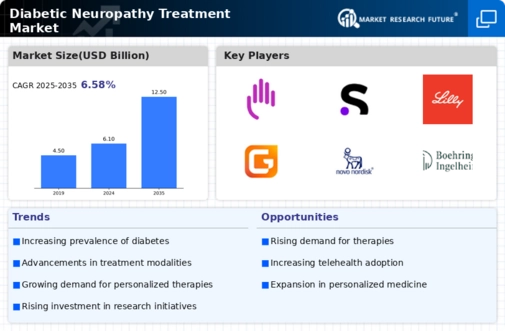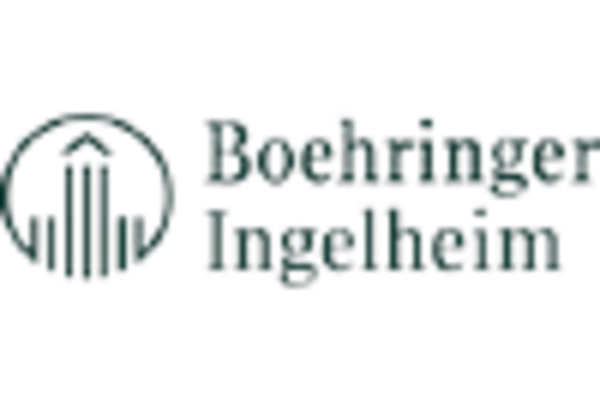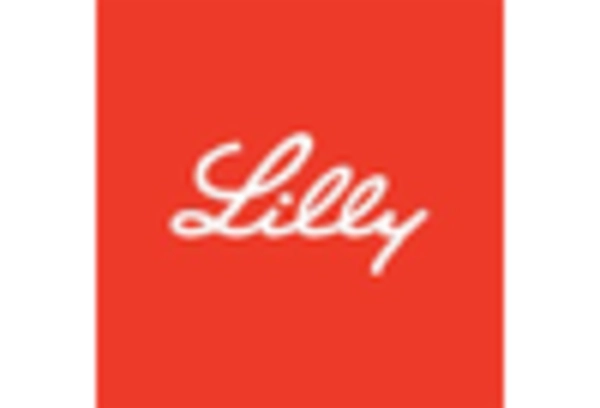Growing Geriatric Population
The increasing geriatric population is a significant factor contributing to the expansion of the Diabetic Neuropathy Treatment Market. Older adults are at a higher risk of developing diabetes and its complications, including neuropathy. As life expectancy continues to rise, the number of elderly individuals living with diabetes is expected to increase, leading to a corresponding rise in the prevalence of diabetic neuropathy. This demographic shift necessitates the development of tailored treatment strategies that address the unique needs of older patients. Consequently, the Diabetic Neuropathy Treatment Market must focus on creating effective therapies that cater to this growing population, ensuring that they receive appropriate care and management for their condition.
Rising Awareness and Education
Increased awareness and education regarding diabetic neuropathy are pivotal in shaping the Diabetic Neuropathy Treatment Market. Healthcare professionals and organizations are actively promoting the importance of early detection and management of diabetic complications, including neuropathy. This heightened awareness is leading to more patients seeking medical advice and treatment options, thereby driving market growth. Educational initiatives aimed at both patients and healthcare providers are crucial in disseminating information about the risks associated with diabetes and the potential for neuropathy. As awareness continues to rise, it is anticipated that more individuals will be diagnosed and treated for diabetic neuropathy, further stimulating the demand within the Diabetic Neuropathy Treatment Market.
Increasing Prevalence of Diabetes
The rising incidence of diabetes worldwide is a primary driver for the Diabetic Neuropathy Treatment Market. According to the World Health Organization, the number of individuals diagnosed with diabetes has surged significantly, with projections indicating that by 2030, approximately 578 million people will be living with the condition. This escalating prevalence is closely linked to the development of diabetic neuropathy, a common complication that affects a substantial portion of diabetic patients. As the population of diabetic individuals grows, the demand for effective treatment options for diabetic neuropathy is likely to increase, thereby propelling the market forward. The Diabetic Neuropathy Treatment Market must adapt to this growing need by innovating and expanding treatment modalities to cater to a larger patient base.
Integration of Telehealth Services
The integration of telehealth services into diabetes management is emerging as a transformative driver for the Diabetic Neuropathy Treatment Market. Telehealth platforms facilitate remote consultations and monitoring, allowing healthcare providers to manage diabetic patients more effectively. This approach not only enhances access to care but also enables timely interventions for complications such as neuropathy. As telehealth continues to gain traction, it is likely to improve patient adherence to treatment regimens and follow-up care, ultimately leading to better health outcomes. The Diabetic Neuropathy Treatment Market stands to benefit from this trend, as telehealth solutions become increasingly incorporated into standard care practices, thereby expanding the reach and effectiveness of diabetic neuropathy treatments.
Advancements in Treatment Modalities
Innovations in treatment options for diabetic neuropathy are significantly influencing the Diabetic Neuropathy Treatment Market. Recent advancements in pharmacological therapies, including the development of novel analgesics and neuroprotective agents, have shown promise in alleviating symptoms and improving the quality of life for patients. Furthermore, the introduction of non-pharmacological interventions, such as transcutaneous electrical nerve stimulation (TENS) and cognitive behavioral therapy, has expanded the therapeutic landscape. The market is witnessing a shift towards more comprehensive treatment approaches that combine various modalities to enhance patient outcomes. As these advancements continue to emerge, they are expected to drive growth in the Diabetic Neuropathy Treatment Market, attracting both healthcare providers and patients seeking effective solutions.


















Leave a Comment